Hello William! It’s very cool to have you here on our Artist Spotlight. Could you please introduce yourself?
Hi, my name is William Landgren and I’ve been creating digital art using the free 3D software Blender for nearly 6 years. I started learning Blender at 12 years old, right before covid, just by following tutorials on Youtube and posting my results on Instagram, which somehow started gaining popularity. It has since turned into a really rewarding hobby and has become a way for me to express my love for everything visual.
Having grown up inside the digital sphere, what is your relationship with technology and, in extension, your art’s relationship with the internet?
I’ve always loved technology for all sorts of reasons but mainly because it extends our capacity to reach goals, and when your goals are to express or create, the intersection can be beautiful. One of the main reasons why I got so into 3D art was because of the sudden expansion of things I could create. I was already interested in filmmaking way before vfx and before Blender, making iMovie short films with my brothers.
During those days I was limited by things I could capture on my phone and have my brother act in. Migrating to 3D, which is a whole other technological modality, dramatically widened my potential to create.
When it comes to the relationship between art and the internet there are definitely clear upsides and downsides. A big pushing factor during my earlier days was the constant appreciation and motivation I got from my followers. This was a great thing and served as partial rocket fuel for all of the painstaking hours needed to learn and improve.
But if you start to subconsciously decouple your incentives from the creative process by replacing them with extrinsic forces, like social media algorithms, now all of the sudden you find yourself working for Instagram. This was one of the reasons I took a big break from social media, feeling that I had lost track of my internal drive.

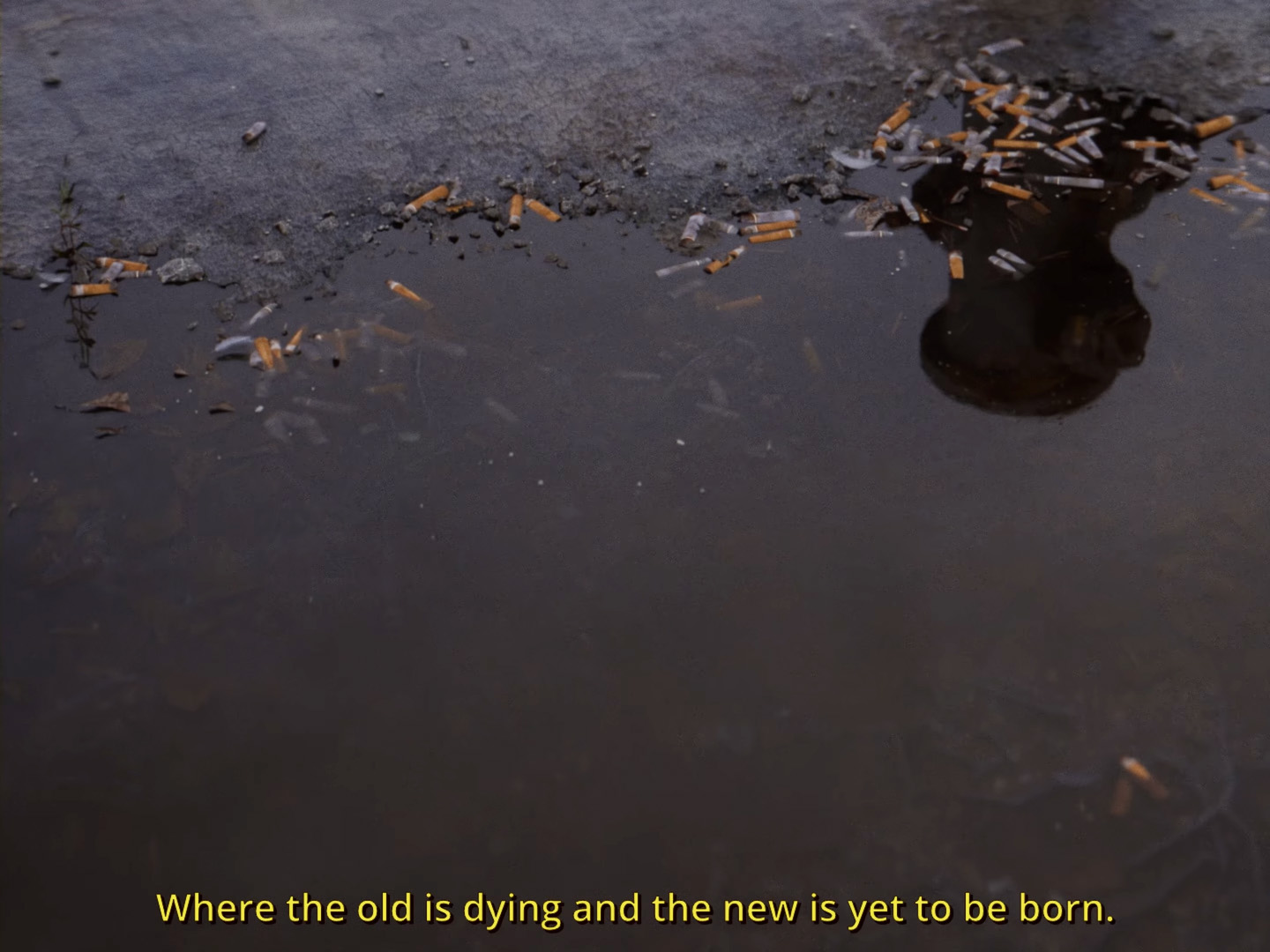
Yes, that can indeed be a very slippery slope.
Did you know many people in the industry before? Or how did you approach networking?
I didn’t know a soul starting out but have since come to know lots of new people through Instagram and Discord. I wouldn’t say I’ve had any particular approach to networking and haven’t been very interested in it either. But I’ve still gotten the privilege to connect with a lot of wonderful people with similar interests to mine.
Let’s talk about your recent film Untitled Spaces, I felt the emotional side of it was very strong. What made you explore the aestheticism of interior design and ambiences?
Well it’s hard to say. During this past year I ended up getting really interested in interior design and mid century architecture. Why that is I’m not really sure. I figure that we are what we eat, we speak in the language of the communities we grow up in and that the same must go for architectural design - we become a reflection of the spaces we live in. In that sense it’s one of the more profound art forms because it’s intimately tied to our everyday lives.
But at the same time the project is not about designing inviting, livable spaces but rather a focus on certain constituents of interior design frankensteined together into something new. I was intrigued by the shapes and forms of certain furniture pieces, lamps, materials etc as well as how they could be recontextualised to create interesting compositions and evoke totally different feelings than what they were initially intended for.
You have an amazing sense of taste and a great understanding of what themes in contemporary art resonate on a larger scale.
For example, the homage to artist David Bowen’s Tele-Present Wind (2024) in Untitled Spaces is a great example of how the world of machines interacts with the natural world.
What is it personally that entices you about this subject?
I find that even though the real world is full of mysteries and character, it’s also filled with patterns and mathematical structure. The chaotic nature of grass blowing in the wind can seem so complex and nature-like. But at the same time you can represent its essence using two servomotors. Just like how complicated math problems can be elegantly solved, the same can go for nature's “mathematical functions”.
Upon seeing Bowen’s art installation I immediately wanted to integrate it into the film, which I ended up doing by contrasting them next to curtains blowing in the actual wind. It’s probably one of my favorite shots because it manages to both integrate and contrast artificiality with naturality.
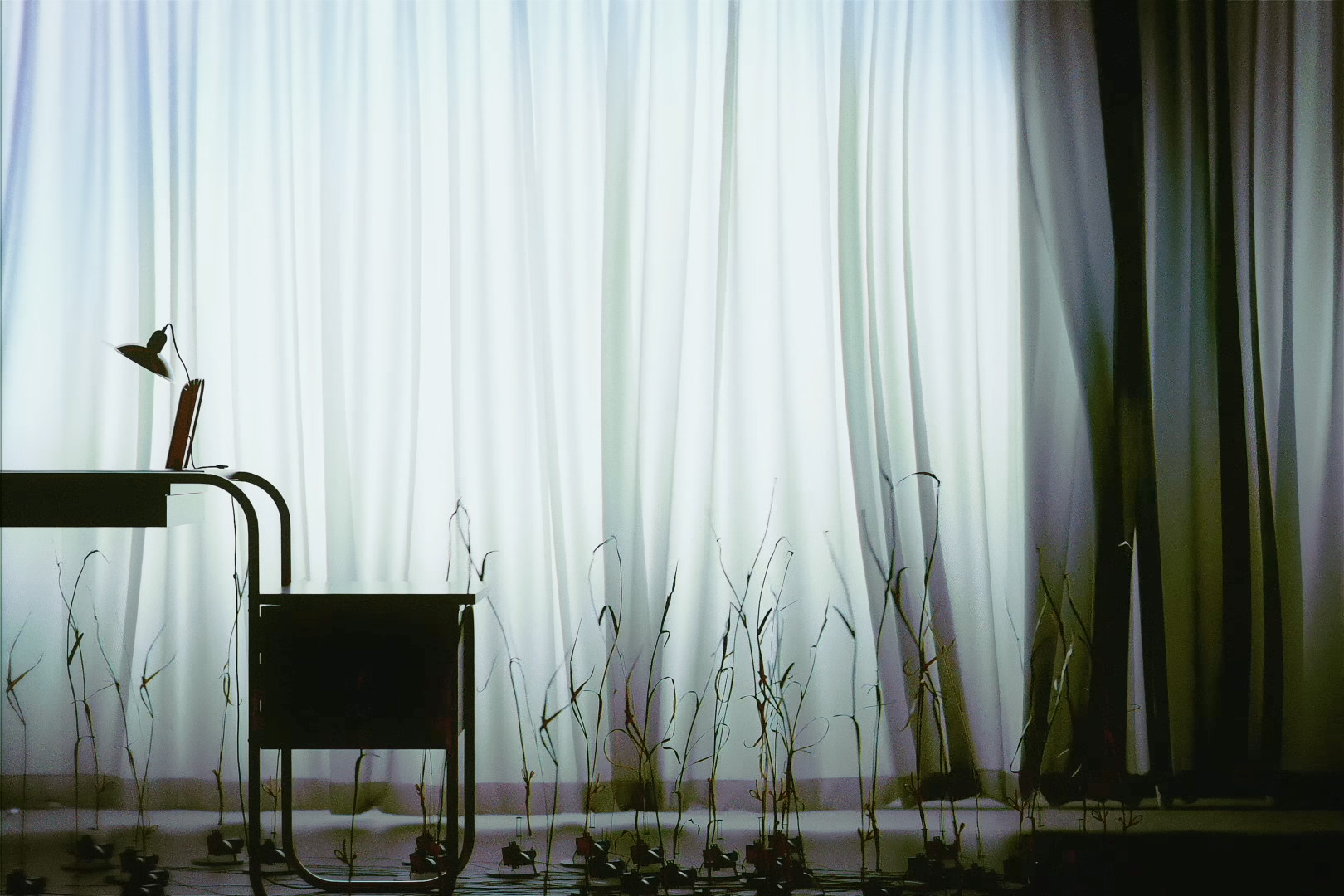
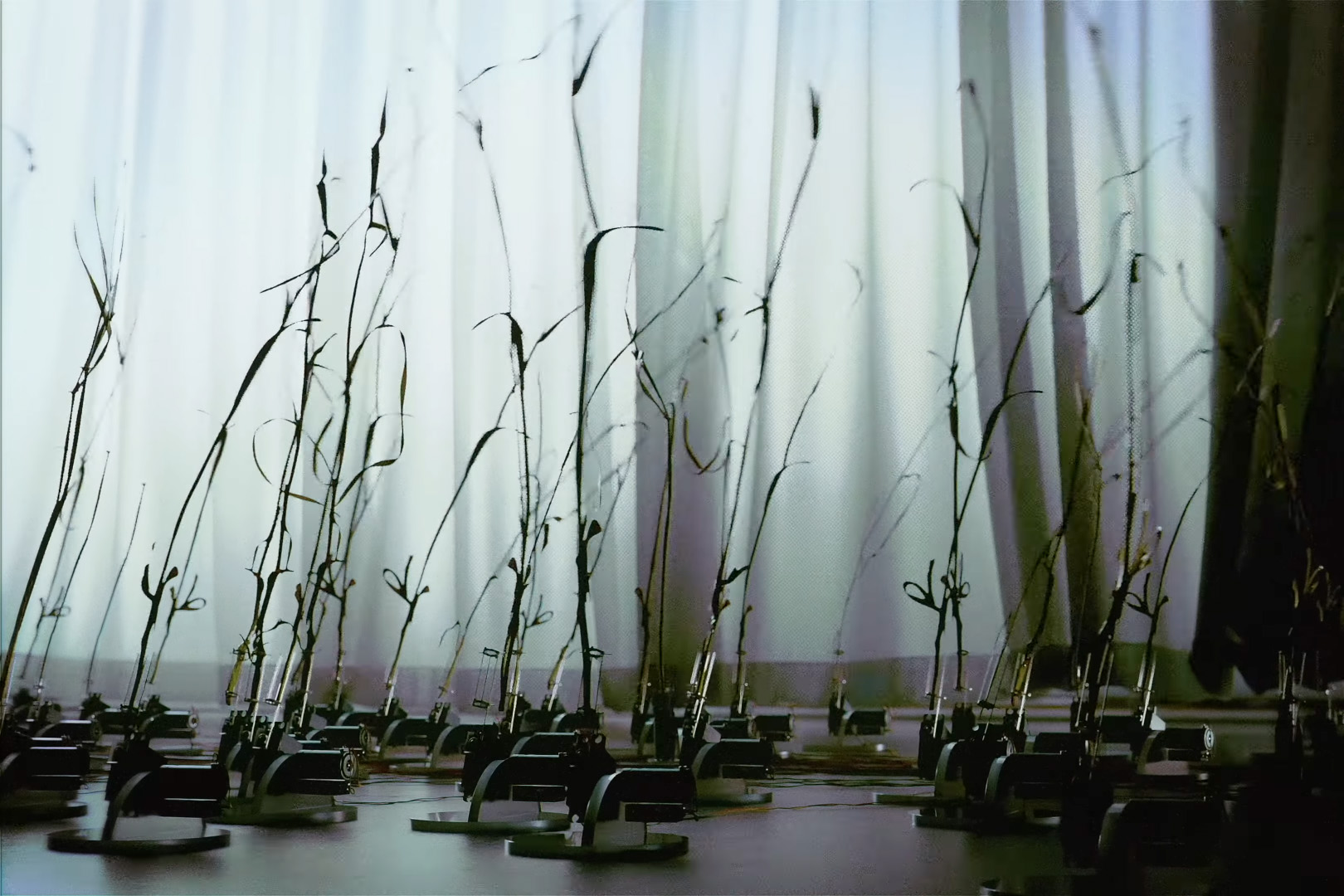

It’s absolutely beautiful. Thanks for clarifying. The contrast between the natural wind blowing in the curtains and the artificial wind is a great subtle additional layer.
How much are you looking for abstraction in both natural and geometric shapes?
Reflecting on my process, I strive to maximise both abstraction as well as tangibility and detail. Our brains are divided into two hemispheres where the right one sees gestalts and abstract patterns while the left is more focused on apprehending specifics.
And we don’t see the world from either one of these lenses - they are somehow integrated dialectically (Ian McGhilchrist is very well versed on these topics).
Trying to create art with this in mind is something I think can lead to very engaging results that maximally stimulates the brain. For example you can find very abstract, painterly compositions in nearly every environment even if the subject is everything but abstract - It’s a matter of perspective.
Similarly your work lives in naturalism. From how realistic your environments look to the way you place the camera on your subjects.
What is about the real world that surrounds you that inspires your work?
The real world is truly the ultimate inspiration. What I again and again find most inspiring about it is all of its character and specificity - the “imperfections”, or rather, perfections. The microscratches and bent reflections on metal surfaces, the slight wrinkling along the bottom of a poorly setup backdrop, the way digitizing analog film accentuates the grainy film look but also the artificiality, through the digital sharpening, etc.
All of this is gold and is what grounds anything that is abstract. Abstraction focuses on relations rather than things, but relations can’t exist unless there are things which can relate. The real world is full of these “things”.
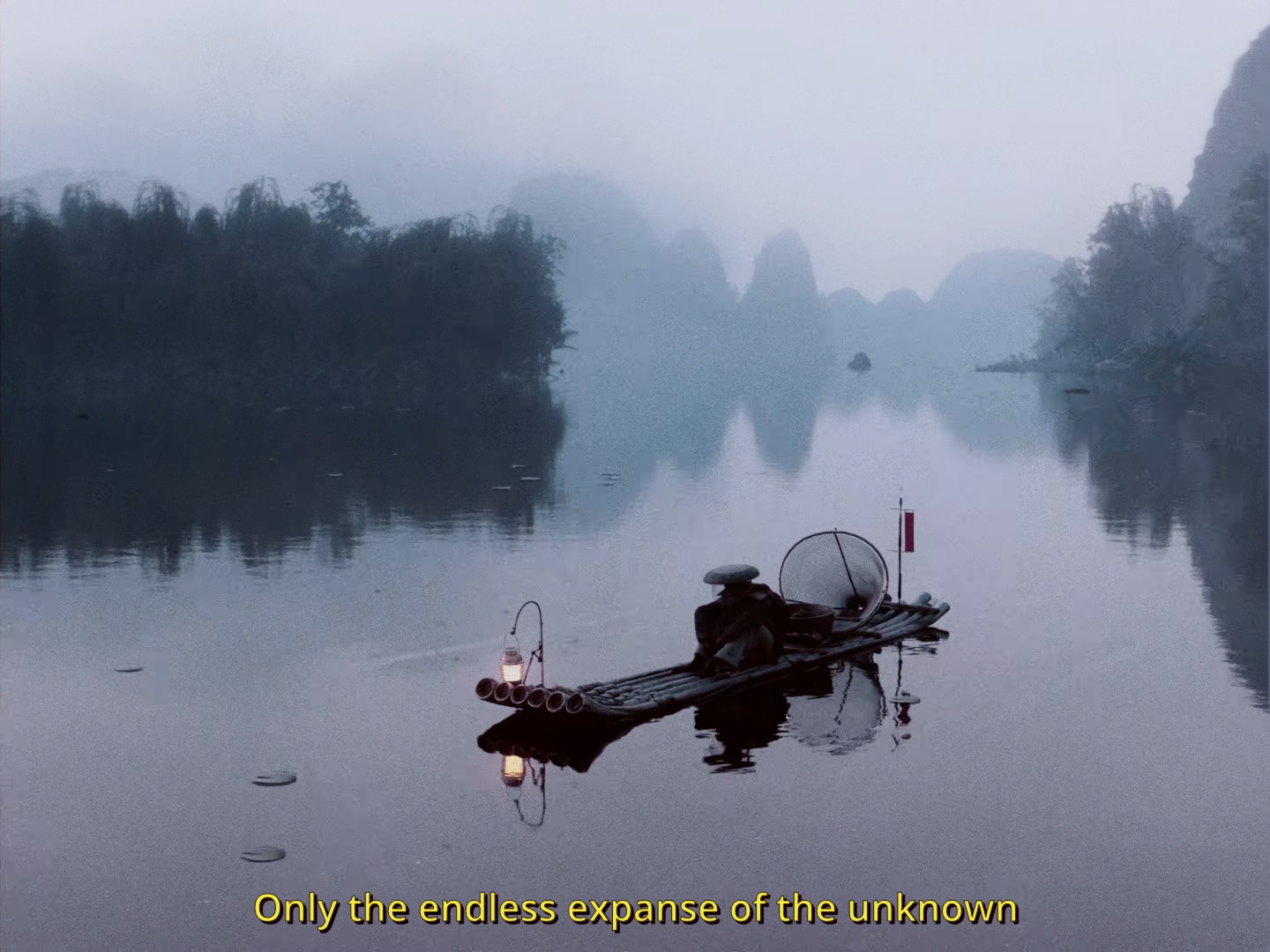
Could you give a breakdown on your methodology and creative process as an artist?
My projects are usually seeded from everyday life from seeing cool, inspiring stuff. It can be an interesting photo, a scene in a movie, a youtube thumbnail, or an architectural project - something that usually invokes a feeling of awe. This feeling is usually surpassed by an even greater feeling of wanting to truly understand what it is behind that piece of input that makes me tick. The rest of the project is a process of both understanding and adding to that beauty.
How much do you tend to conceptualize an idea before developing it? Are you big on experimenting?
It’s an integration of both, for sure, and it applies differently depending on the stage of the project. For example, I rarely have more than a gestalt or a very rough outline before starting. A lot of people tend to be very focused on the story elements or overarching structure of a short film, but I find myself really getting fueled by letting sequences evolve over time, putting more time and effort into the planning for each individual shot.
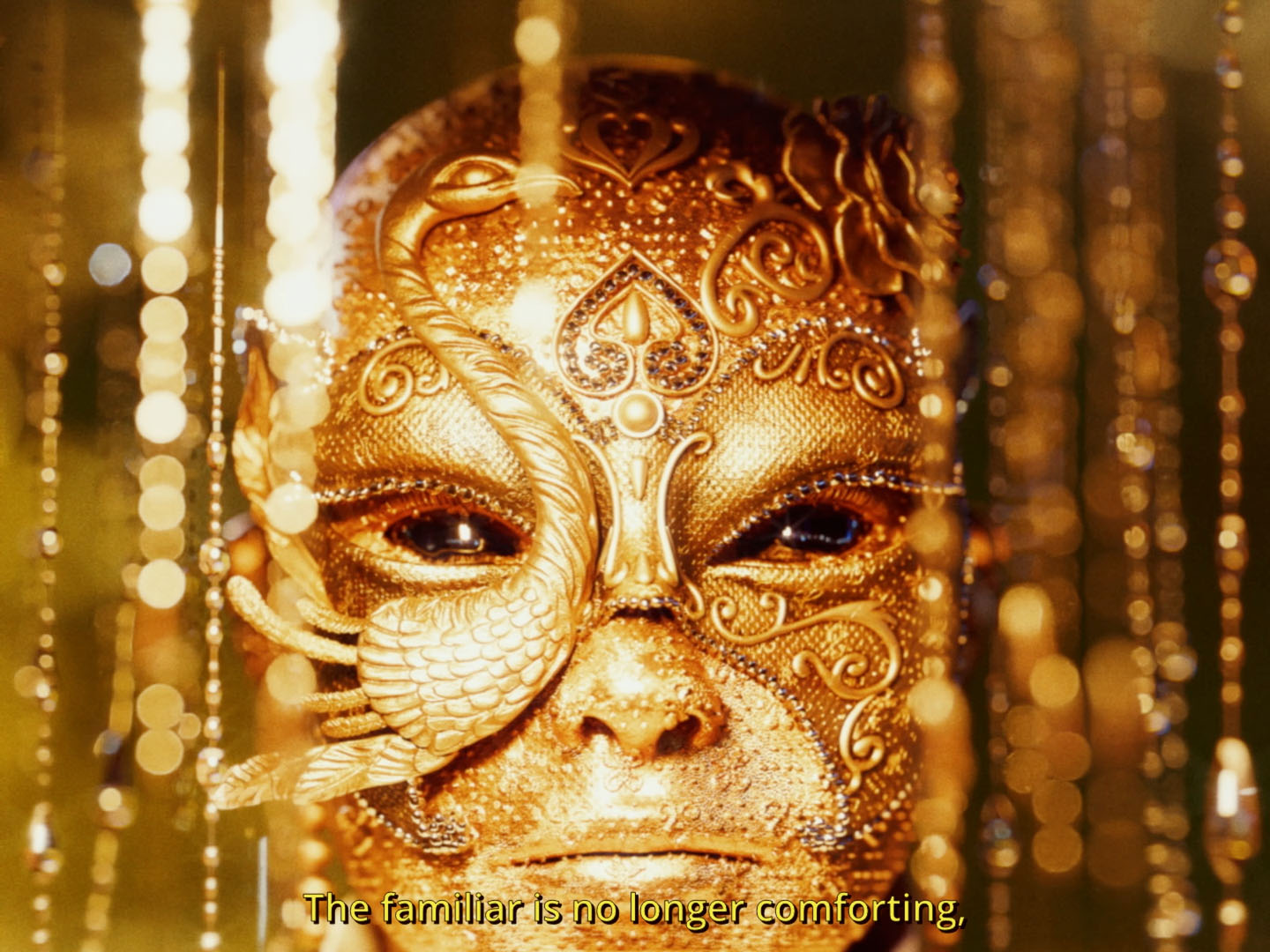
How critical are you with your ideas? When do you know when something is right?
There are lots of ways to be critical of one's work. What I value most is not necessarily to be faithful to any original plan but rather to make sure that the final product, however it turns out, works. I feel there are pros and cons to sticking to your vision. A lot of times it’s important to trust the process and to be able to put up with diminishing returns for hours on end for it all to pay off once you figure it out.
But it’s just as easy to lean too heavily on your original ideas, even when they clearly are not working.
When it comes to being critical I always put a lot of emphasis on being faithful to my references. Before I even start working on a shot I make sure to have good reference photos or videos for every difficult element in it. To these I critically compare and contrast my renders which often helps me to channel my energy into the right places.
What role does failure play in your process?
Failure is integral to my process and heavily shapes my projects. When an idea isn’t working I can either put a lot of time into making it work or let it guide me to try other ideas. I often find that the shots I’m the happiest with come from accidents or from creatively avoiding that which is difficult.

From Untitled Spaces to your earlier works such as Impetus, they seem to carry a dominant sense of loneliness. They also showcase an abstracted depiction of daily life.
What is it that most interests you about exploring these themes in 3D?
I’m actually not very sure. I rarely tend to critically think about what I want to express with my art. Most of my creation process is a form of self-induced discovery trying my hardest to create something that I myself would be intrigued by. I happen to be very lucky that other people also seem to find what I create / discover interesting. Concepts like loneliness, discomfort, duality, uneasiness etc might be a part of those emergent feelings embedded in my work.
Would you consider yourself an observer?
Sure, and I think it’s something that gets automatically accentuated by being interested in any form of art based in realism, where you have to be able to model different aspects of the world. Modelling (referring to the broader sense of the word) is always contingent on the ability to assimilate data / observing.

How do you personally feel about liminal spaces? Are these spaces you find comfort in?
I wouldn’t say I find comfort in liminal spaces, but they’re certainly intriguing and often play on the emotions that we tend to avoid, like uncomfortability, artificiality and oddness. But in the same way that it can be comforting to listen to rain and thunder from the comforts of your house, I find that it’s possible to appreciate these feelings by exploring them through the third person using art.
Achieving the results you dream of making is a double-edged sword.
How do you balance technical improvement and developing your artistic point of view?
They usually go hand in hand for me. Oftentimes taking time to learn a certain technical skill can open new doors and expand the framework to which my creativity is bound. At the same time what I find beautiful and want to create either exists entirely or mainly outside my domain of confidence - which always means having to build on my technical skills.
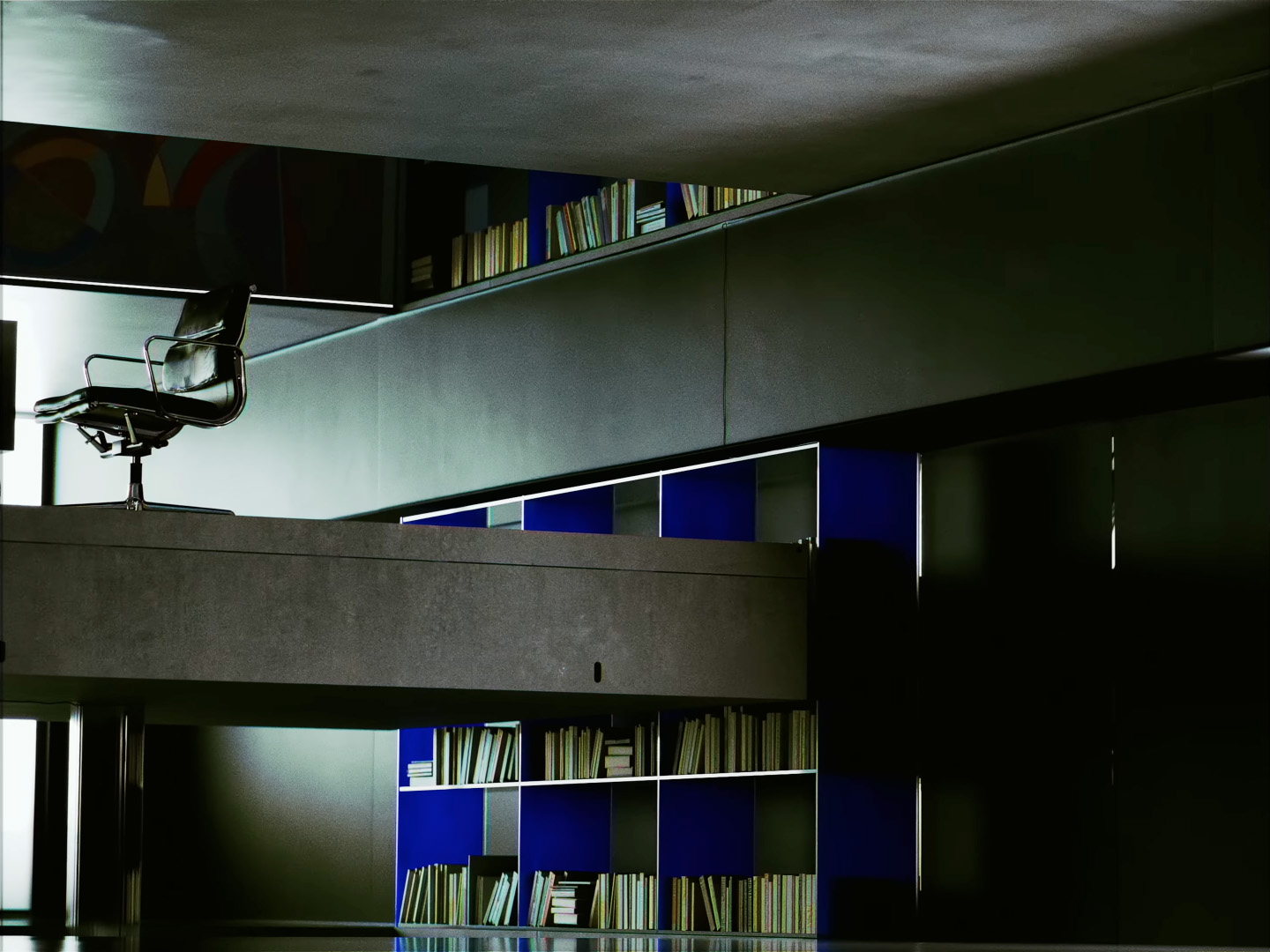
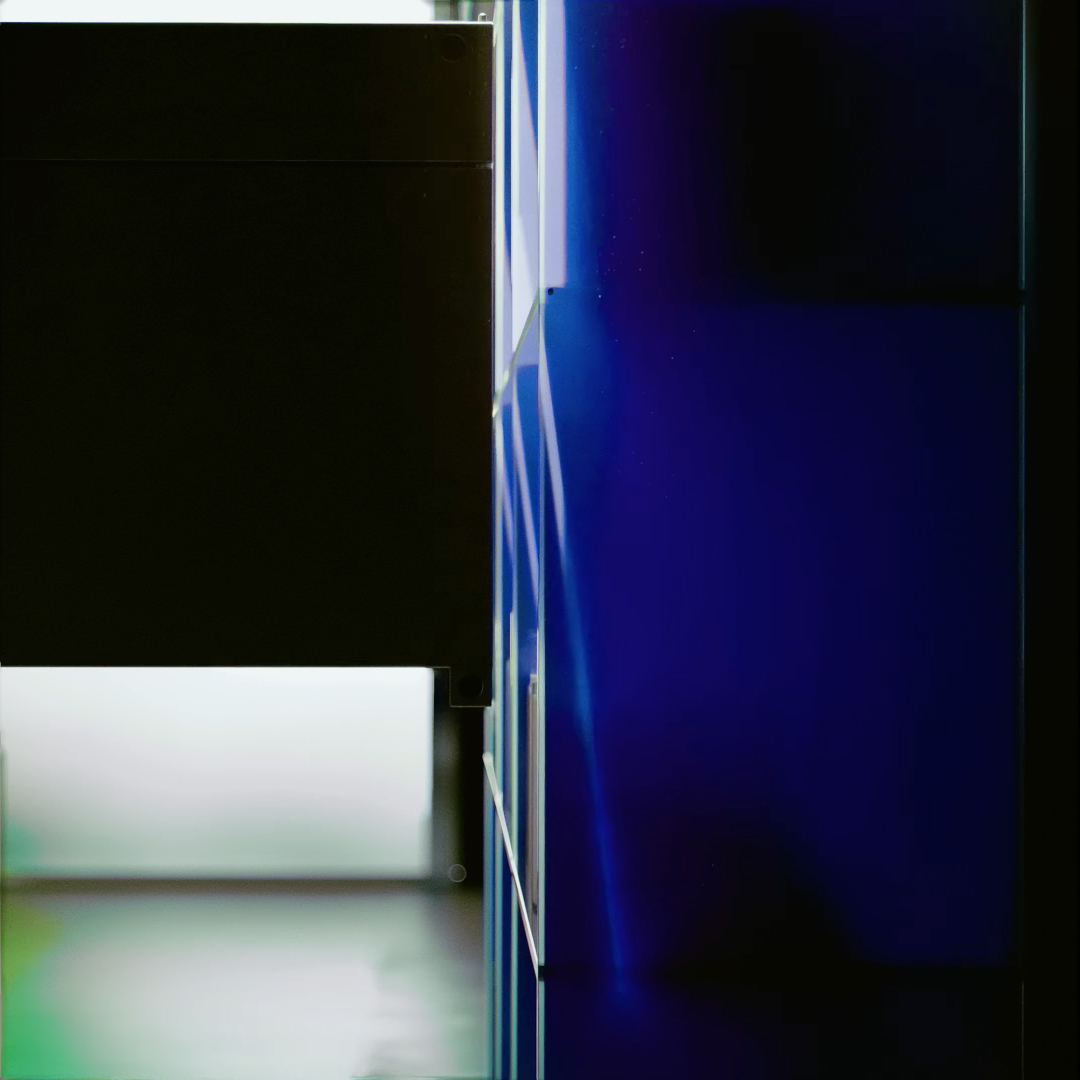
How important are personal projects to you?
They are everything, at least in the domain of art. It’s my way of showing love for what I love. One thing is to feel a deep awe for something and get inspired by it, but another product, intrinsic to that reaction is a yearning to become a perpetuator of its beauty.
This requires being in and truly appreciating that specific facet of reality, be it a painting, a song, a philosophical idea. But it’s also about taking one step further and extracting that which truly speaks to you.
Just like it’s integral to learn different technical skills like handling a paintbrush, or understanding basic color theory or how to play certain chords on an instrument, you also have to learn the language of what you find beautiful, which is the actual reason for why you’ve even put time into learning those technical feats to begin with. Personal projects are a way of channeling what you are inspired by into something new and projecting it into the world.
If we take a moment to look ahead William. Where do you see your work heading in the next few years?
I really have no idea. While writing this I happen to be in a very “fork in the road” kind of part in my life having just finished high school with tons of possible ways to steer my life in. At the same time that computer graphics have been such a big part of my life I’m also interested in all sorts of things that I want to explore further.
But I find it hard to see myself working in the industry in the future considering AI. At the end of the day CG has been the most cost effective tool to create visual graphics for movies and advertisements and is now swiftly getting outcompeted. But when it comes to the art side of things, the medium that is 3D graphics is still something I’m very fascinated by and lies near and dear to my heart.
And when it comes to other modes of expression I’m very fascinated by writing, different aspects of philosophy as well as music and would love to try to possibly combine them with 3D and graphics.
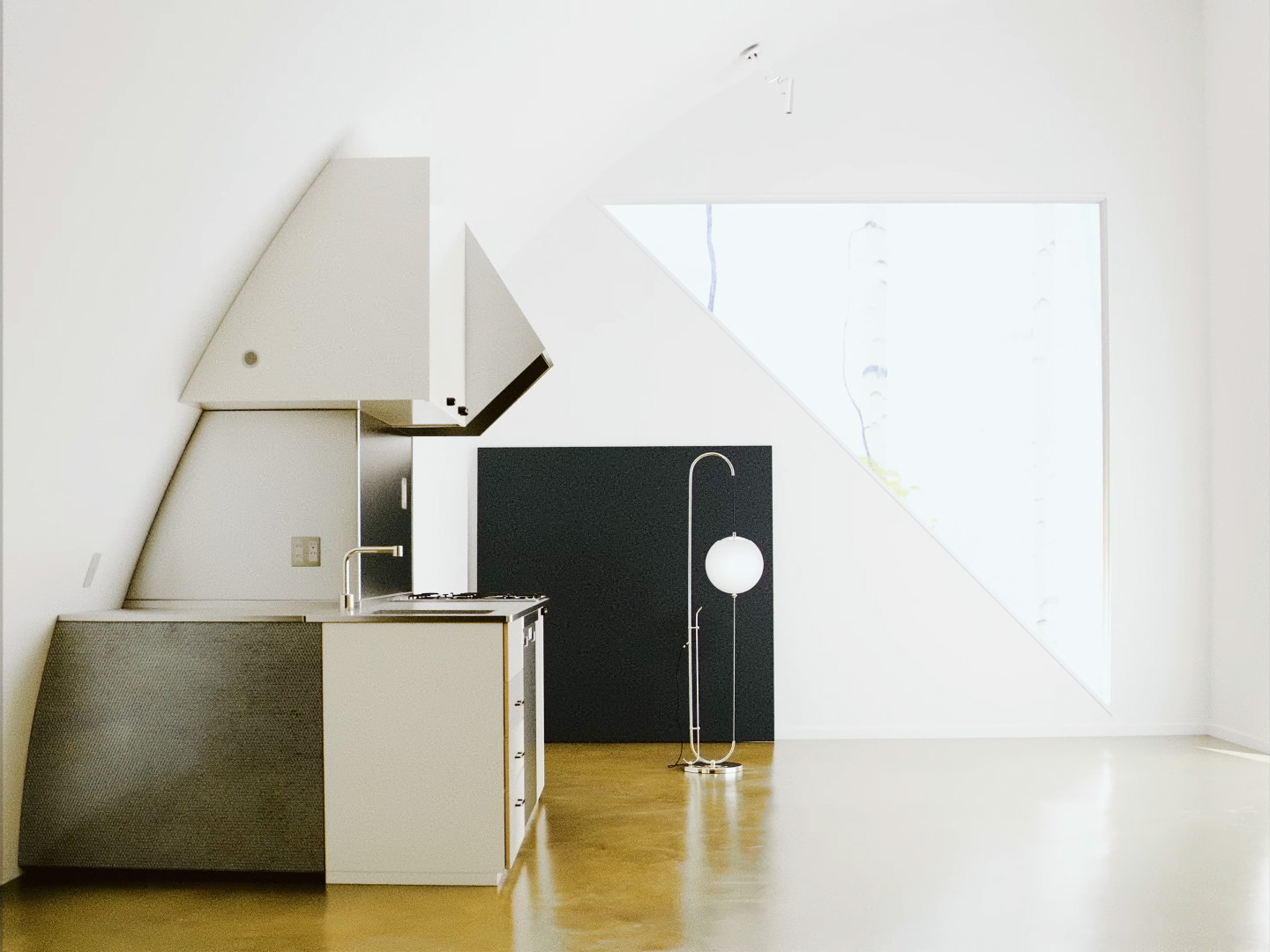
That sounds wonderful. Always stay open to exploring the avenues you desire. At the end of the day they’re all valuable experiences that make you… you.
What kind of advice would you give to someone thinking of a career in 3D Art? There is always a new generation taking their first steps into this adventure.
Really focus on what you find beautiful and what intrigues you. This requires both attentiveness to the world around you and the world inside of you. To put it more pragmatically: expose yourself to all sorts of input, try to figure out what you find special about it and then try to replicate it. By doing this you will overtime build a better internal model for what your style is as well as how to express it.
What separates creativity from copying is the ability to extract the ”bit of you” which is present in the world and synthesising something new from it. It’s also important to keep in mind that this is an iterative process and will require iterations, meaning lots of trial and error.
Great advice. Well, that was it William! Thanks so much for being a part of this!
As always, we like to end the Artist Spotlight with a personal recommendation from the artist. Any good films, books, habits, or anything else you’d like to recommend to the reader?
Parasite (2019), The Brutalist (2024), Memento (2000) and Ex Machina (2014) are essential.
Inspirational people in no particular order or category: Alberto Mielgo, Daniel Schmactenberger, Ash Thorp, Ian Hubert, Erroll Garner, Miles Davis, Rem Koolhaas, John Verveake, Ian McGhilchrist, Max Tegmark, Bahk Jong Sun, John Lautner, Ernst Haas, Saul Leiter.
Thanks for having me :)
Explore the Artist Spotlight
[1]: Dreams of Blauw are any form of crystallised thought based on honest expression. Sometimes they linger a shade of blue in your after-image.